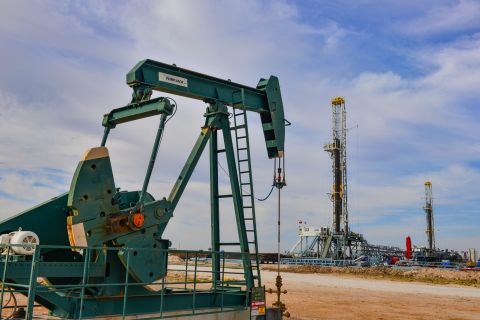U.S. natural gas futures slid about 4% to a two-week low on Aug. 2 on record output and forecasts for less demand over the next two weeks than previously expected.
That price decline came despite a 5% jump in European gas prices on concerns about Russian supplies and forecasts for temperatures across much of the United States to remain hotter than normal through at least mid August.
So far this summer, electric companies have already burned record amounts of gas to meet soaring power use to keep air conditioners humming. Power demand in Texas was expected to break records again this week.
Gas-fired plants have provided over 40% of U.S. power in recent weeks, according to federal energy data, even though gas futures soared about 52% in July. That is partially because coal prices keep hitting fresh record highs, making it uneconomical for some generators to use their coal-fired plants.
One factor weighing on gas futures most of the summer has been the ongoing shutdown of the Freeport LNG export plant in Texas, which left more gas in the United States for utilities to inject into what are currently extremely low stockpiles.
Freeport, the second-biggest U.S. LNG export plant, was consuming about 2 Bcf/d of gas before it shut on June 8. Freeport estimated that the facility will return to partial service in October. Some analysts say the outage could last longer.
Front-month gas futures fell 35.6 cents, or 4.3%, to $7.927/MMBtu at 8:00 a.m. EDT, putting the contract on track for its lowest close since July 19.
So far this year, the front-month was up about 112% as much higher prices in Europe and Asia keep demand for U.S. LNG exports strong, especially since the amount of gas from Russia to Europe has dropped following Moscow's invasion of Ukraine on Feb. 24.
Gas was trading around $62/MMBtu in Europe and $45/MMBtu in Asia.
The United States became the world's top LNG exporter during the first half of 2022. But no matter how high global gas prices rise, the United States cannot export any more LNG because its plants were already operating at full capacity.
Russian gas exports on the three main lines into Germany – Nord Stream 1 (Russia-Germany), Yamal (Russia-Belarus-Poland-Germany) and the Russia-Ukraine-Slovakia-Czech Republic-Germany route – rose to 2.5 Bcf/d on Aug. 1 from 2.4 Bcf/d on July 31.
That compares with an average of 2.8 Bcf/d in July and 10.4 Bcf/d in August 2021.
Top producer
U.S. gas futures lag far behind global prices because the United States is the world's top producer, with all the fuel it needs for domestic use, while capacity constraints limit LNG exports.
Data provider Refinitiv said average gas output in the U.S. Lower 48 states rose to 97.4 Bcf/d so far in August from a record 96.7 Bcf/d in July.
On a daily basis, however, output was on track to drop 1.4 Bcf/d to a preliminary 96.7 Bcf/d on Aug. 2 after soaring 2.4 Bcf/d to a daily record high of 98.4 Bcf/d on July 29. Preliminary data is often changed later in the day.
With hotter weather expected, Refinitiv projected that average U.S. gas demand including exports would rise from 99.6 Bcf/d this week to 100.2 Bcf/d next week. Those forecasts were lower than Refinitiv's outlook on Aug. 1.
The average amount of gas flowing to U.S. LNG export plants rose to 11.1 Bcf/d so far in August from 10.9 Bcf/d in July. That compares with a monthly record of 12.9 Bcf/d in March. The seven big U.S. export plants can turn about 13.8 Bcf/d of gas into LNG.
Recommended Reading
EIA: Permian, Bakken Associated Gas Growth Pressures NatGas Producers
2024-04-18 - Near-record associated gas volumes from U.S. oil basins continue to put pressure on dry gas producers, which are curtailing output and cutting rigs.
Benchmark Closes Anadarko Deal, Hunts for More M&A
2024-04-17 - Benchmark Energy II closed a $145 million acquisition of western Anadarko Basin assets—and the company is hunting for more low-decline, mature assets to acquire.
‘Monster’ Gas: Aethon’s 16,000-foot Dive in Haynesville West
2024-04-09 - Aethon Energy’s COO described challenges in the far western Haynesville stepout, while other operators opened their books on the latest in the legacy Haynesville at Hart Energy’s DUG GAS+ Conference and Expo in Shreveport, Louisiana.
Mighty Midland Still Beckons Dealmakers
2024-04-05 - The Midland Basin is the center of U.S. oil drilling activity. But only those with the biggest balance sheets can afford to buy in the basin's core, following a historic consolidation trend.




